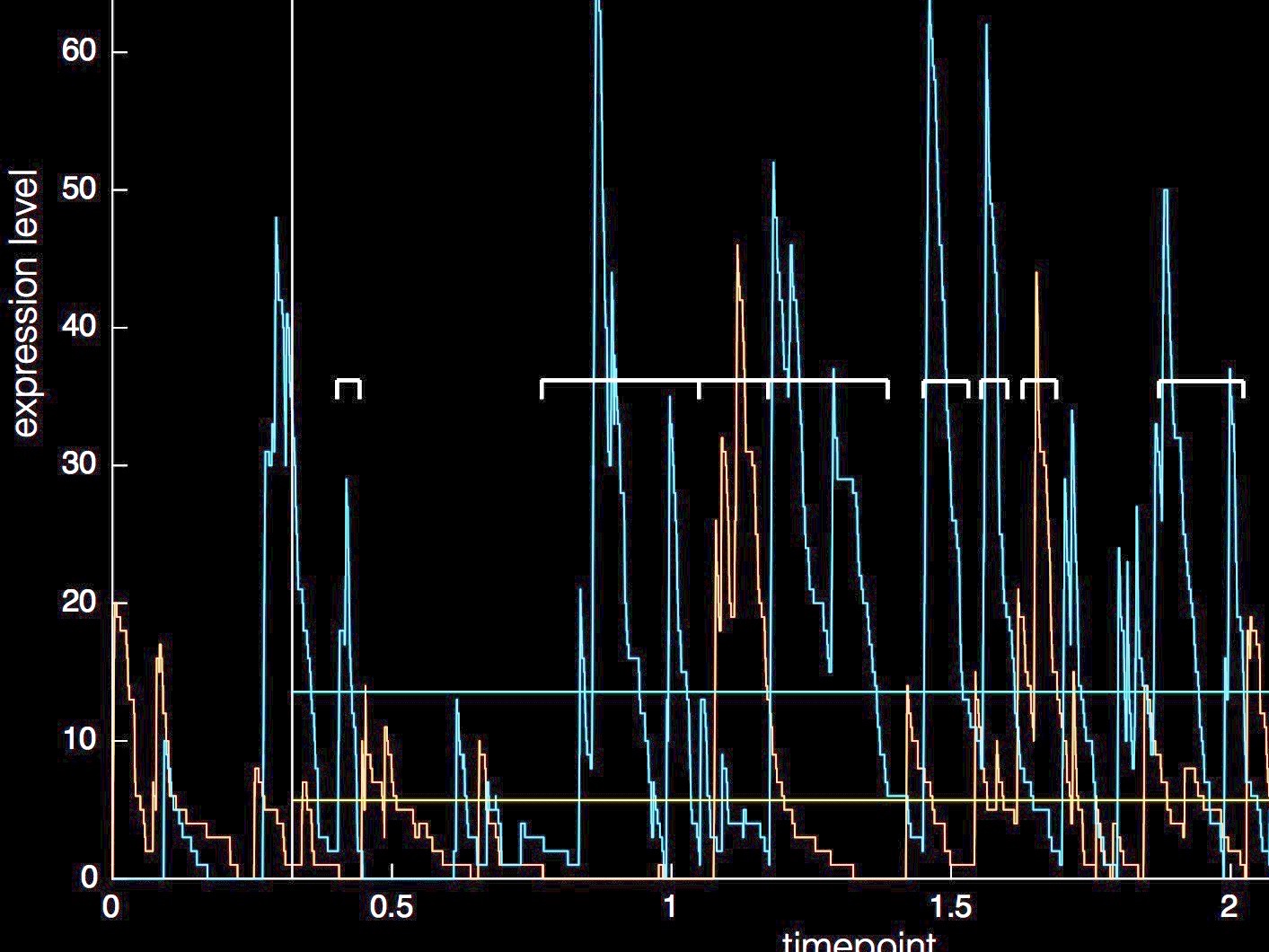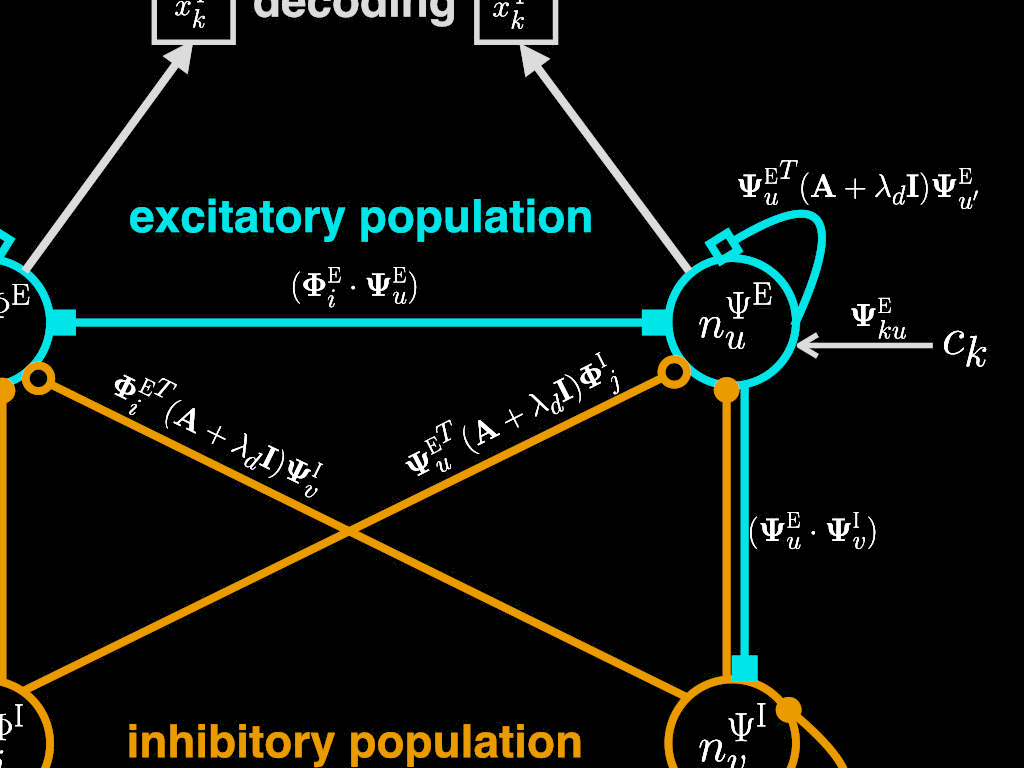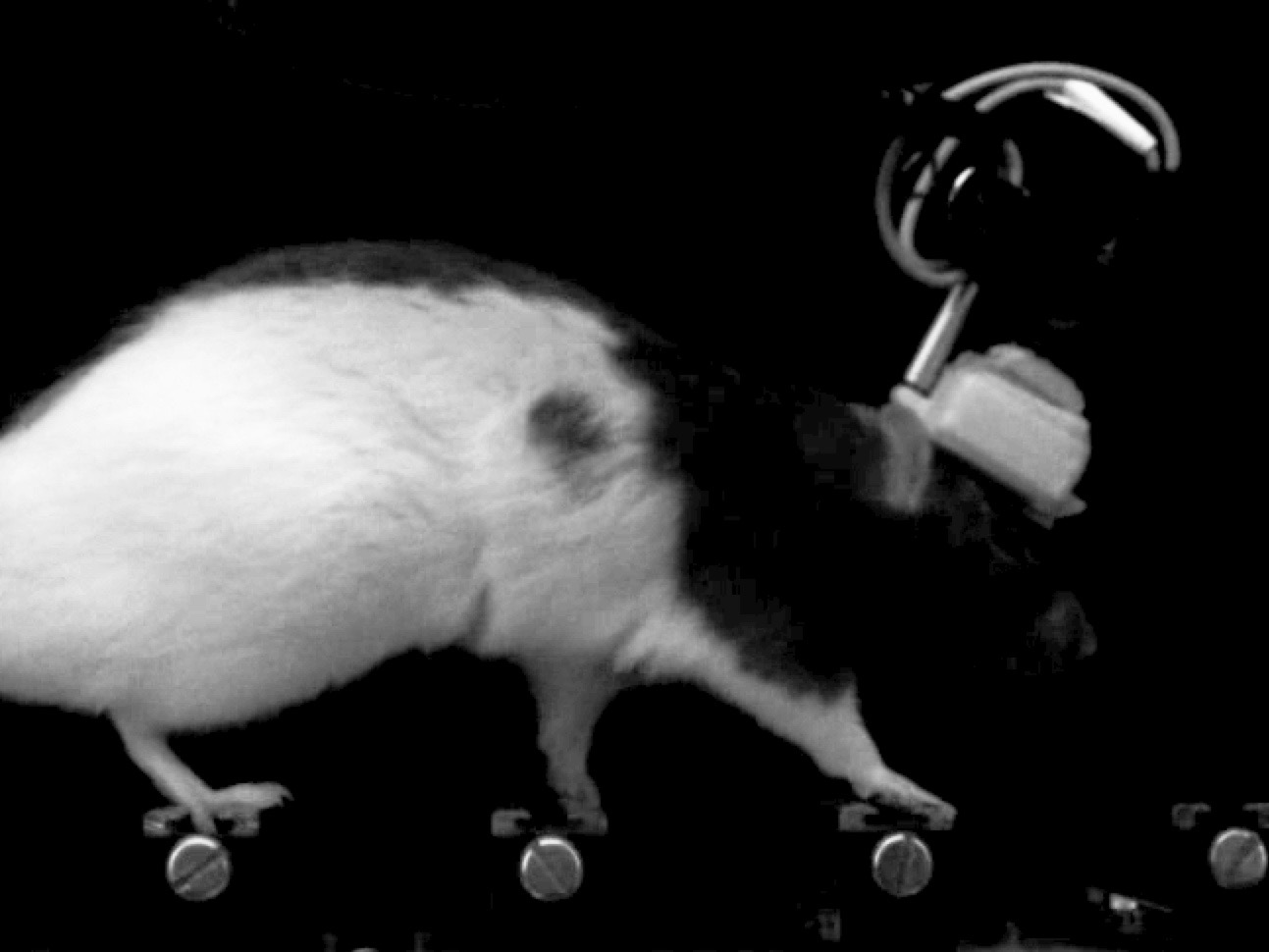JorgeAMenendezComputational
Neuroscience
CoMPLEX MRes
As part of the MRes I completed in my first year at CoMPLEX, I worked on four rotation projects in different labs. Each of them is briefly described below, with their corresponding write-ups available for download.
Monoallelic expression as an emergent property of stochastic gene regulation
Supervisors: Andrew Pomiankowski & Alexander Stewart
Mini Project #1
About 10-15% of autosomal genes in mammals seem to be monoallelically expressed: randomly, only one of the two available alleles is translated into protein. It remains a mystery why or how this occurs. In this project, we explored the possibility that it may simply arise from the stochastic nature of gene expression. We attack the problem from a theoretical perspective, showing that under certain constraints stochastic gene networks can lead to stable periods of monoallelic expression.
Computing with recurrent spiking networks: from mathematical optimality towards biological plausibility.
Supervisor: Peter Latham
Mini Project #2
How do neurons compute? Here we tackled the problem of trying get a network of neurons to compute the trajectories of a linear dynamical system. We find that, under previous architectures, it seems impossible to reconcile balanced excitation and inhibition with Dale's law in a biologically realistic manner. We propose a more flexible rate coding approach, suggesting that maybe the brain's dynamic wiring cannot support a precise and optimal spike code.
Understanding motor cortex function: insights from electrocorticography in the rat brain.
Supervisors: George Dimitriadis & Adam Kampff
Mini Project #3
As its namesake would suggest, the motor cortex is highly involved in the execution of movement. If you stimulate a rat's motor cortex, its limbs twitch. If the rat makes a complicated movement, its motor cortex lights up with activity. But if you remove the motor cortex entirely, the rat lives on perfectly fine. In this project with the Kampff lab, we tried to expand on these lesioning results by measuring electrophysiological signals from motor cortex during motor behavior in controlled environment.
Contextual processing in mouse visual cortex.
Supervisors: Marius Pachitariu & Matteo Carandini
Summer Project CoMPLEX Thesis
A classical finding in visual perception is the tilt-after effect: if I make you stare at a particular orientation for a period of time, subsequent orientations will look tilted in the opposite direction. This perceptual bias is also reflected in response changes of V1 orientation-selective cells. This kind of context-sensitive response seems to be a fundamental computation in most perceptual systems. In this project with the Cortex Lab, we investigated the role of different types of interneurons and measured physiological tilt after-effects at an unprecedented scale in mouse visual cortex, using state-of-the-art calcium imaging techniques.



